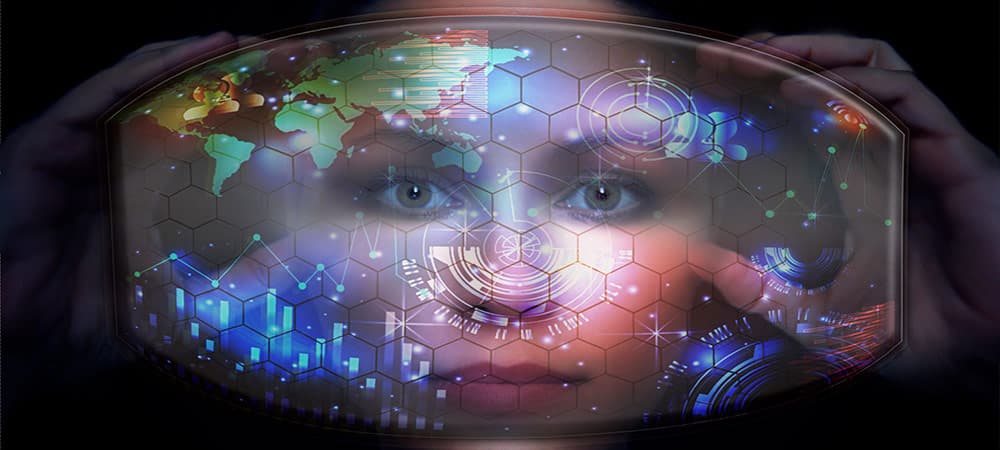When we talk about the latest technology disruptions, especially virtual and augmented reality, we think that gaming and similar industries can only benefit from them. Lately, the fashion and beauty industry has been unlocking some of the latest technology solutions and applying them to provide a top-notch customer experience. Many fashion and beauty brands started flirting with the idea of implementing VR technology after the onset of the COVID-19 pandemic. Consumers were stuck at home and relied on online shopping. The biggest problem they faced was purchasing apparel, beauty products, and fashion accessories without trying them in real. Consumers, especially women, love to try on beauty products like foundation, lipsticks, and blush-on, to check the shade and if it suits them or not. The same is the case for purchasing apparel, including formal and casual wear.
As per the findings of HP, a firm specialising in developing tech gadgets, the revenue of the virtual reality industry is expected to go up to $9.5 billion by 2025. The same report also revealed that around 66% of shoppers would love to engage in a VR-powered shopping experience. Virtual reality would transform the beauty and fashion industry through its simulated environment. The tech environment would deceive the human brain by making them feel like they are actually trying on the products in the beauty store. Consumers use both hardware, like VR glasses and headsets, and software, to make the most out of the tech-powered experience. Human sensory engagement, such as audio, visual, haptic and hand gestures, enhances the immersive experience.
Marla Beck, CEO and co-founder of Bluemercury, revealed that the pandemic bridged the gap between retailers and consumers. The latest tech offerings brought them even closer. Erin Schmidt, a beauty industry analyst at Coresight Research, reported that virtual try-on simulation tech shifted the beauty industry completely. Google partnered with data associates ModiFace and Perfect Corp and launched a makeup try-on tool via AR technology.

Let’s see how the makeup and fashion industry is going to be transformed by virtual reality:
-
Beauty Industry
As per the latest reports and consumer surveys, shoppers are totally ready to try on lipsticks, check the latest hair colours and styling techniques and test different shades of eyeshadows and contact lenses virtually. Consumer engagement certainly surged after brands introduced VR tech to their beauty stores. Ulta Beauty declared that shopper engagement for its GlamLab virtual try-on tool rose five times, with more than 19 million shade try-on since the pandemic outbreak. Ulta Beauty expanded the tech in 2020 and allowed consumers to test different hair colours, eyebrows pomade and lashes.
L’Oréal, the famous makeup and skincare brand, sealed a deal with ModiFace, a Toronto-based beauty tech company, in 2018 to acquire access to its patents within the augmented reality space. MAC, another prominent makeup brand, launched its “Try On” feature on its website to let users engage in window shopping and try Velvet Teddy, Ruby Woo and Russian red lipstick shades. Benefit quickly caught up on the trend and introduced VR tech to shape and fill in eyebrows according to the face shape. Chanel, the French couture brand, made try-on tech available on its British website. Maybelline helps beauty lovers test the latest foundation shades according to their skin tone and ethnicity. Sephora, Bobbi Brown and O.P.I also launched their VR tech solutions.
2. Fashion Industry
The fashion and apparel industry is another leading sector to invest in and implement VR technology. Farfetch, along with other fashion firms, such as Prada, has partnered with Snapchat to allow consumers to engage in virtual window shopping. Consumers just stand in front of the camera and the software installed in Farfetch stores virtually tries on different apparel choices according to their choice. The technology, called 3D Body Mesh, matches the body and cloth simulations and offers a visually-realistic attire look. Shoppers can switch outfits using voice commands, buy the products directly within Snapchat and share their images.
Upshot
Virtual reality is here to stay, and we should be prepared to see it everywhere in the upcoming years. As companies gear up to officially launch their services in the metaverse, VR and AR would become extremely relevant and crucial for businesses.



